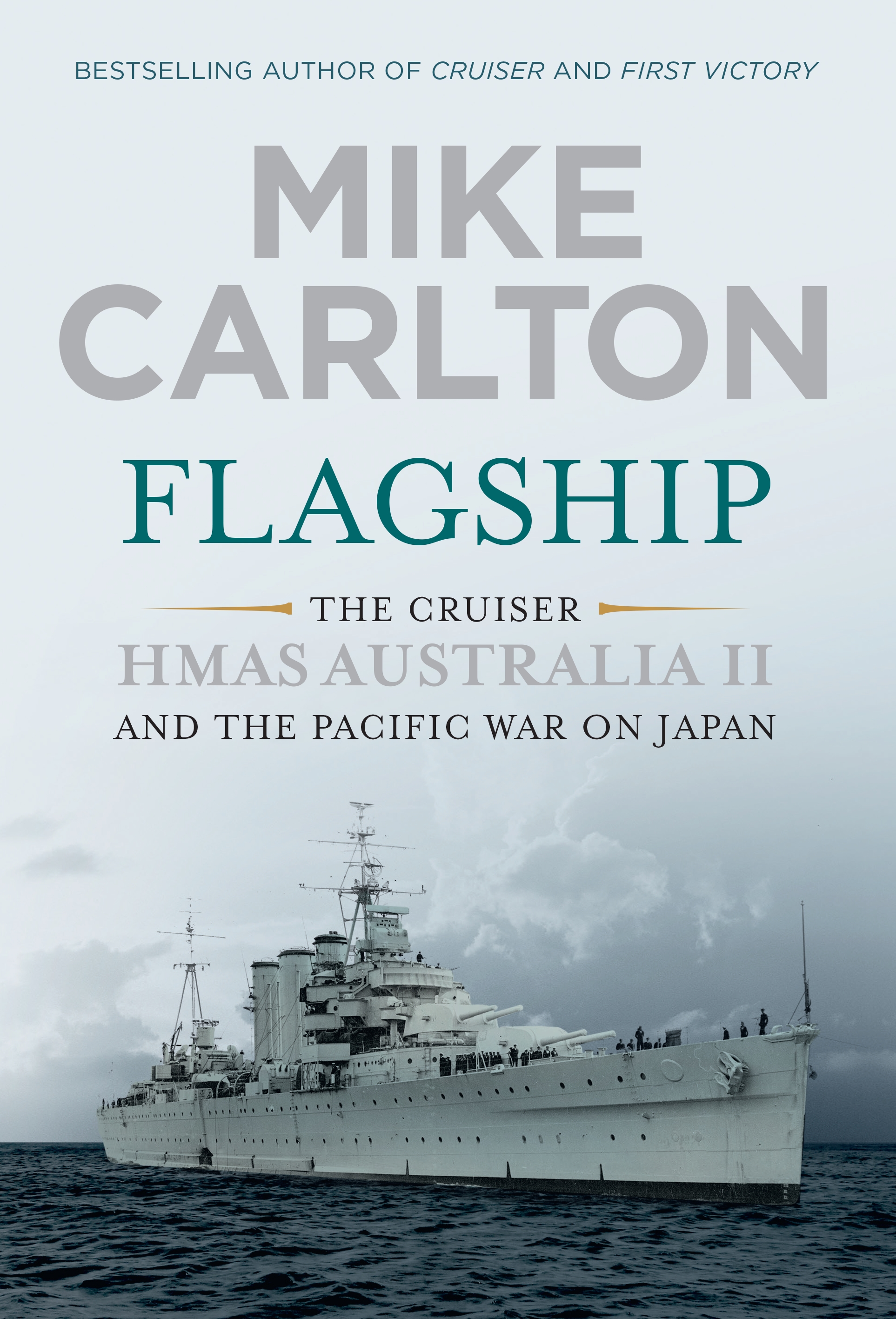HMAS Australia, and her sister ship Canberra, were County Class heavy cruisers (with 8-inch guns) built in England for the Royal Australian Navy. Australia became the Flagship on 3 May 1928 when Rear Admiral Hyde flew his flag as Rear Admiral Commanding the Australian Squadron. Australia arrived at Sydney in October 1928 and was joined by Canberra in January 1929.

Hardcover 448pp RRP: $34.99
Unlike Canberra, sunk after being heavily damaged at the Battle of Savo Island in 1942, Australia saw action in both the Atlantic and the Pacific and survived the war.
In the Atlantic she served with the Royal Navy’s 1st Cruiser Squadron and took part in Operation MENACE, the abortive attempt to convert Dakar from Vichy to the Free French cause.
When Australia returned home just before Christmas 1941, Rear Admiral Crace transferred his flag from Canberra on Christmas Eve, and four days later the Australian Squadron sailed to escort a convoy to Port Moresby. Under the command of Captain Harold Farncomb, Australia took part in the Battle of the Coral Sea and was present, although not engaged, at the Battle of Savo Island.
With over 600 pages, this is more than a history of HMAS Australia II and the Pacific war on Japan. While the emphasis is on the Pacific War, there is also an overview of the war as a whole.
A history of ship operations could be dull reading, but Mike Carlton has enriched the story with many details of shipboard life; examples of which are sailors doing their dhobeying (laundry) in a bucket and the on-board murder of stoker Riley, which led to a court martial, two death sentences and an eventual constitutional crisis.
Shropshire, the heavy cruiser that replaced Canberra is also well covered. It is a naval axiom that “The sailor is the most important factor in war”, and seamen of all ranks are an important theme of the book. Many are well known: the canteen manager Jack Langrell; Mackenzie (Mac) Gregory, the Officer of the Watch at Savo Island, and Lieutenant Commander Warwick Bracegirdle, the highly respected gunnery officer who was able to obtain 40mm Bofors guns from the Americans in exchange for two cases of Scotch whisky. A succession of commanding officers are remembered in the names of the Collins class submarines: Harold Farncomb, captain of three cruisers, and in command at the Battles of the Coral Sea and Savo Island, and who replaced Commodore Collins when he was severely wounded at Leyte Gulf; Emile Dechaineux, killed on his bridge at Leyte, and of course John Collins, captain of Sydney when she sank the Italian cruiser Bartolomeo Colleoni in 1940.
Perhaps Australia’s greatest test was at Lingayen Gulf in January 1945 where four Kamikazis hit her, and when the fear of being trapped below if torpedoed was replaced by the fear of immolation, at an upper deck action station, by the exploding aviation fuel of an impacting Kamikazi.
The product of enormous research by a gifted writer, Flagship is absorbing reading. The only criticism: when speed at sea is described throughout in knots (nautical miles per hour), perhaps the reader could cope with distances in nautical miles instead of kilometres?
Reviewed for RUSIV by Roger Buxton, April 2018
Contact Royal United Services Institute about this article.






